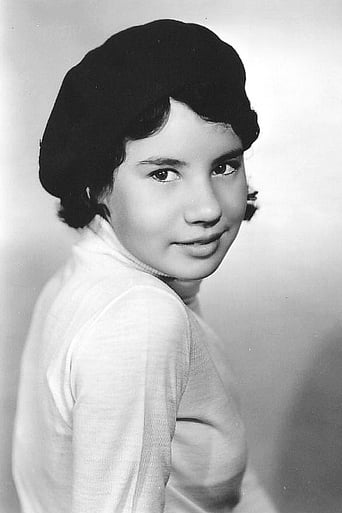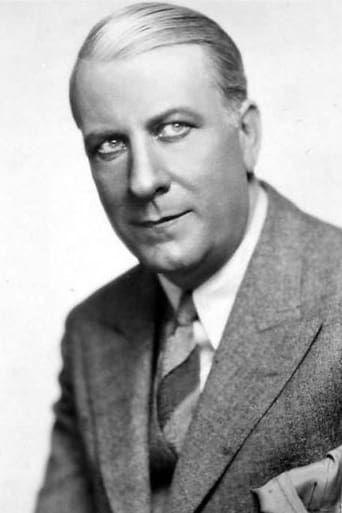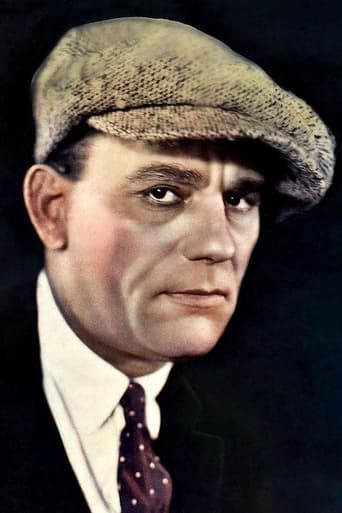Solemplex
To me, this movie is perfection.
Matrixiole
Simple and well acted, it has tension enough to knot the stomach.
PiraBit
if their story seems completely bonkers, almost like a feverish work of fiction, you ain't heard nothing yet.
MartinHafer
This documentary consists of a couple film historians/preservationists showing clips of surviving footage from missing films. They are almost exclusively silent movies and the fragments are probably mostly of interest to HUGE silent film buffs and historians. However, other folks will not only find the clips of dubious value but the delivery of the hosts is about as dull and lifeless as humanly possible. Any interest and excitement they have about the subject matter is totally lost and this makes the documentary a lot more tedious than it needs to be. There were also a few interviews and the one with Baby Peggy was exceptionally interesting--one of the few highlights of this film shown on Turner Classic Movies.
wes-connors
This is an excellent compilation of exactly what the title says, "Fragments: Surviving Pieces of Lost Films," produced by Randy Haberkamp and the good folks at "Flicker Alley". Some of this material has been available, usually as a "bonus feature" on an accompanying home video release. But it's great to have so much of it available in one place. There is no explanation for some famous footage not included - possibly the "fragments" starring Greta Garbo have received a new copyright. Her "The Divine Woman" reel has been shown fairly frequently on Turner Classic Movies (TCM), which also shows this documentary.Our hosts are Michael Pogorzelski from the Academy Film Archive, and Mike Mashon from the Library of Congress. We begin with an explanation and look at "paper prints" and proceed with a small look at Theda Bara's "Cleopatra" (1917). Very little of Ms. Bara's work survives, and the tiny fragment looks like it may be her best. Next is a more generous sample from Colleen Moore's "Flaming Youth" (1923). Clara Bow is represented by "Red Hair" (1928) and "Three Week Ends" (1928). These three films appear to have been typical, but charming. This is also the case with Douglas Fairbanks' "He Comes Up Smiling" (1918).Before Doug's romp comes one of "Fragments" highlights, the surviving footage from "The Way of All Flesh" (1927) starring Emil Jannings. This performance was noted as one of the era's best by the "Academy Awards" (and others), and Mr. Jannings' characterization is still dazzling. The two surviving portions of "The Way of All Flesh" are quite striking in that they form a "story" of their own, thanks to fate (and narration). Donald Keith, who was frequently co-starred with Clara Bow, is also memorable. Also seen is the only surviving portion of "The Miracle Man" (1919), one of the most legendary of all lost films.A newly discovered reel of John Ford's melodrama "The Village Blacksmith" (1922) follows a rollicking trailer for his "Strong Boy" (1929) starring Victor McLaglen. Then, in another highlight, "Baby" Peggy Montgomery aka Diana Serra Cary appears to reminisce about the filming of her own "The Darling of New York" (1923). The 93-year-old star is still a darling. More small fragments from big stars are shown, along with trailers from otherwise completely missing films. The final highlight is the surviving footage from the colorful sound picture "Gold Diggers of Broadway" (1929). That's entertainment… let's have a sequel!******** Fragments (4/3/11) Randy Haberkamp ~ Michael Pogorzelski, Mike Mashon, "Baby" Peggy Montgomery, Emil Jannings
calvinnme
... but it comes up a bit short for fans of early sound film. If the title had been Fragments of Lost Slient Films I'd give this one a ten, because it is very good at giving the viewer a sense of what has been lost from our silent film heritage - 90% of these are gone largely due to two factors. One is the fact that all silent films were placed on volatile nitrate and either decomposed or worse burst into flames causing the loss of many other silent films. Safety stock did not come into use until 1950, and even then only MGM made an organized attempt to transfer their films to the newer more durable media. The other factor is that after sound came in people considered silent films to be useless and simply discarded or neglected them en masse.Specific stars are mentioned who have had their film histories largely erased. These include Theda Bara who made over 40 films for Fox but only two of her films survive. The narrators mention that her appeal in the 1910's is impossible to evaluate since so little of her work survives. Then there is child star Baby Peggy. The final reel of one her few surviving films - Darling of New York - recently resurfaced and the exciting conclusion is shown. That's a real fire they're showing there folks and the piece is made even better with Baby Peggy - now 93 - talking about her actual memories of making the film and her fear of the real fire that was part of the set. The surviving fragment of "Flaming Youth" starring Colleen Moore was shown as well as surviving footage of "Red Hair" starring Clara Bow - the only footage of her in color that survives. Even Douglas Fairbanks and Lon Chaney, whose silent films have a pretty good survival rate, have some among the lost and fragments were shown here. The surviving portion of Emil Jannings performance in "The Way of All Flesh" is shown. It is particularly shocking that Paramount just let this one decay since it was one of the films that won Emil Jannings his Best Actor Oscar.The only place this documentary comes up short is in lost sound films. Only two fragments are shown and both are well known to early sound enthusiasts and are even on DVD - the two reels of the lost "Gold Diggers of Broadway" from 1929 and a very short surviving color fragment from "The Rogue Song" that shows only enough Laurel and Hardy to prove that they were actually in that film. The narrators do mention one reason why many of these early sound films were lost - the very early systems used sound on disc so the films were separate from the disc. Thus today we have complete soundtracks for films available from the late 20's and early 30's but no film. In fact, all that survives of many of the earliest sound films are their silent trailers, which were also shown in this program.Interesting fragments for sound films that could have been added to the presentation - 1929's "He Married In Hollywood" - the final reel of this musical survives in two strip Technicolor. Another good choice might have been the title musical number for 1929's "Red Hot Rhythm". That is all that survives of that film because it was accidentally edited into Vivian Duncan's personal copy of 1929's "It's a Great Life". Probably an interesting clip and definitely an interesting story of accidental preservation.
Michael_Elliott
Fragments: Surviving Pieces of Lost Films (2011) **** (out of 4) Michael Pogorzelshi of the Academy Film Archive and Mike Mashon from the Library of Congress explain some of the reasons why so many films are lost today and they also go into detail about what's being done to try and locate lost film and restore them before they're lost forever.The footage starts off with a few seconds from 1917's CLEOPATRA, which featured sex symbol Theda Bara who we're told that only two of forty films made between 1914 and 1917 still exist. While the footage only lasts a few seconds it's easy to tell in that time that the actress wore very few clothes in the film. Up next is a special section on Vitaphone as we're told that they sent 35mm paper prints off for copyright purposes but instead of sending the entire film the studio would just send certain parts of the film, which is one reason why so many of their movies are now lost. We get scenes from WHAT ONE SMALL BOY CAN DO (1908), THE VIKING'S DAUGHTER (1908), TOO MUCH CHAMPAGNE (1908) and WAITING ON THE WAITER (1910). These clips are followed by a section devoted to Colleen Moore and Clara Bow, the two greatest flappers of the 1920s. We get around ten-minutes worth of footage from Moore's 1923 film FLAMING YOUTH. In one scene we see Moore in front of a mirror getting some make up on and in a more risky clip we see a pool party where one drunk lady jumps into some sprinklers and we can see through her shorts. The Bow footage starts with RED HAIR (1928), which features her only color footage, which was a real eye-opener to see. We also get a few brief sequences from THREE WEEKENDS (1928) and this footage is a brief dance scene.The next section looks at three legendary actors and some of their missing work. THE WAY OF ALL FLESH earned Emil Jannings a Best Actor Oscar but it's also the only acting winner that is currently lost. Two fragments are shown here with the first taken from a documentary released in the 1930s so it features narration. The second fragment is the final couple minutes of the film. We certainly can't judge an entire film on five-minutes but man does the performance seem great. Even with just these few minutes Jannings is able to pull you into the story and one can only hope this eventually turns up complete. HE COMES UP SMILING (1918) is a Douglas Fairbanks picture directed by Allan Dwan. We get just under 10-minutes worth of footage and we get a couple exciting stunt sequences and of course there's plenty of Fairbanks smiling. Lon Chaney in THE MIRACLE MAN (1919) comes up next and I'm sure most will be familiar with this footage since it's been released by Kino and a few other companies. It too comes from a documentary and contains narration. We then take a look at director John Ford and his trailer to the lost STRONG BOY (1929), which looks pretty interesting. We also get the last reel of the director's 1922 film THE VILLAGE BLACKSMITH. This final reel takes place during a violent thunderstorm, which looks remarkably real and one can't help but feel some nice drama in the ten-minutes worth of footage. We also get an interview with Jere Guldin who found the reel and tells how he did so.Baby Peggy then talks about her 1923 film THE DARLING OF NEW YORK and tells a rather harrowing story of the ending of the movie where she and actress Gladys Brockwell are trapped inside a burning building. Peggy talks about what went wrong with the stunt as well as talking about a couple other films made that year. We then get about a four-minute clip of this sequence, which looks quite good as a building crumbles as a fire forces a stunt of the women jumping out a window. Up next we get to look at clips from three comedy films. Up first is Charley Chase in ACCIDENTAL ACCIDENTS (1924) and we see about five-minutes worth of footage. The scene starts off with Chase trying to start his car when a rain storm starts and we see a few of his misadventures in it. Up next is THERE HE GOES (1924), which shows about eight-or-so minutes worth of footage including a few stunts including one where the actor gets dragged behind a horse and buggy. Finally, we get the 2-strip Technicolor footage from Laurel and Hardy's 1930 film THE ROGUE SONG. I love L&H and this footage, what there is of it, was downright hilarious. A wind storm blows the boys tent over so they decide to take shelter inside a dark cave not knowing that a bear just went in there. GOLD DIGGERS ON Broadway (1929) features just under ten-minutes worth of footage and all of it in 2-strip Technicolor. Musical fans will enjoy this footage as we get several dance numbers and songs. None of them seem complete but a couple run for a good length to where you get a pretty good idea of how big some of the numbers were.The final section takes a look at more films whose footage is only available through a trailer. ON TRIAL (1928) an all-talkie from Warner starts things off with HAPPINESS AHEAD (1928) with Colleen Moore up next. The Moore film only has a few frames available so it's played twice. Then we get some footage from Ramon Novarro's 1925 film A LOVER'S OATH. We end things with more trailers to THE GREAT GATSBY (1926), Clara Bow's ROUGH HOUSE ROSIE (1927), THE American VENUS (1926), Gary Cooper's BEAU SABREUR (1928) and POLLY OF THE FOLLIES (1922).





